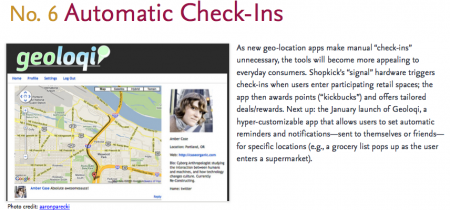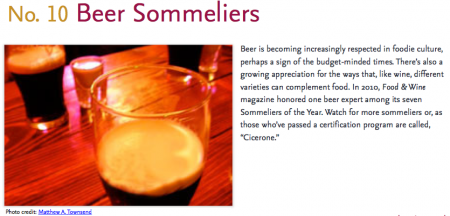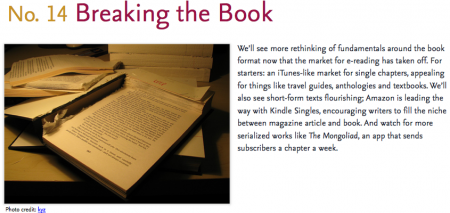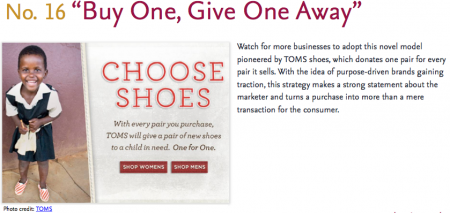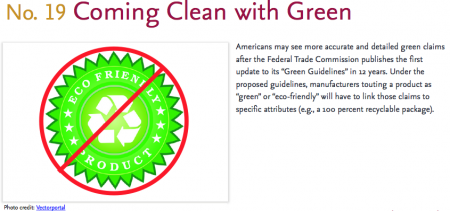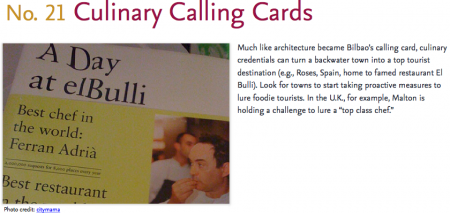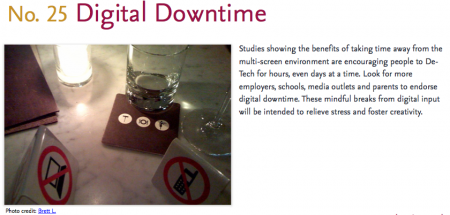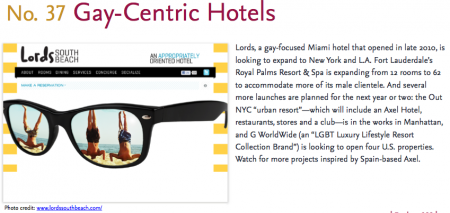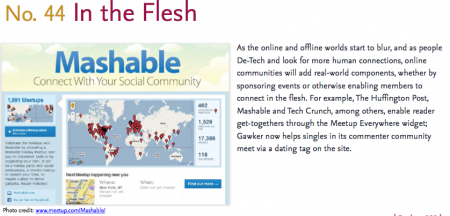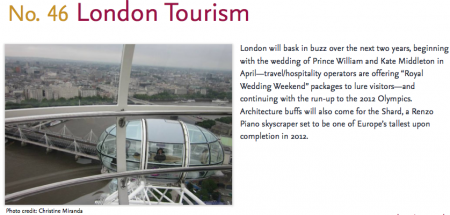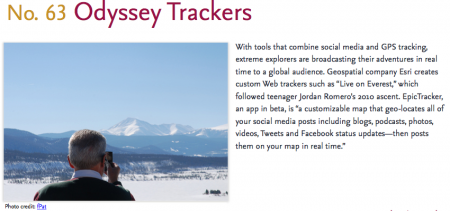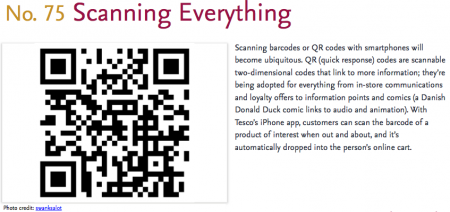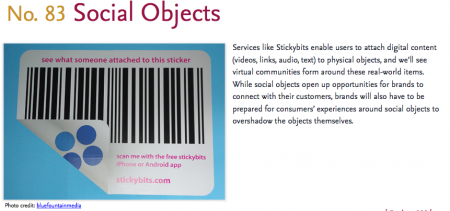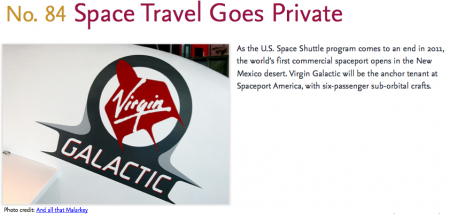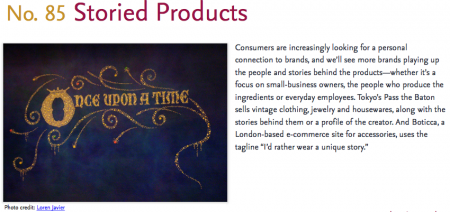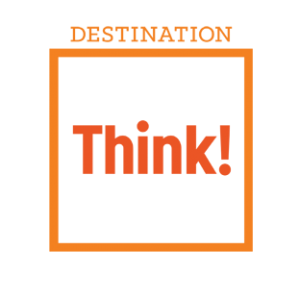» Next Entries
Category
Marketing
-
Marketing, social media, Travel & Tourism
Travel Writers vs Travel Bloggers
07.04.11 | Permalink | 4 Comments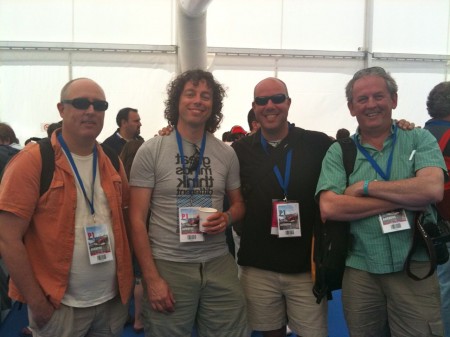
From left to right: Gary Arndt, me, Brooks and Steve Keenan at #blogtripF1
What’s the difference anyways?
A travel writer writes movie scripts, a travel blogger writes TV scripts.That quote comes from Gary Arndt, author of the Everything Everywhere blog. Gary has been traveling around the world since 2007. He has no permanent home. His website receives more visitors than most DMO’s. He has over 100,000 Twitter followers. Gary is the real deal.
A travel writer writes a finished piece. It has a beginning, a middle and an end. On a good travel blog one episode leads to the next and the ongoing story makes the visitor come back over and over again. People are drawn in by the ongoing story.
Awesome.
For more of Gary’s insights, listen to his podcasts about (travel) blogging.
-
Experience Design, Marketing, Travel & Tourism
Customer Complaints are Awesome
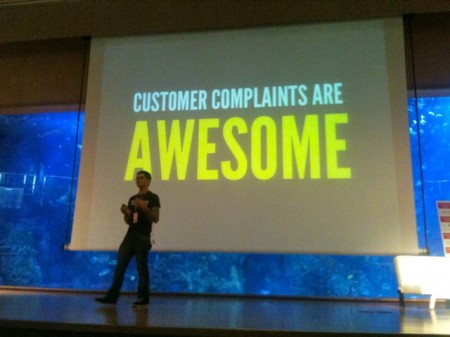
This was one of the messages from John O’Nolan‘s fantastic presentation at the DMO’s and social media conference in Valancia last week.
John rightfully pointed out that when people care enough about your product, take time out of their day and go through the effort to tell you that you need to fix a problem, it probably means they care and want you to succeed.
This is a huge opportunity. Fix the problem, invite them back and you might have a customer for life, and an advocate for your business.
That’s marketing.
I can’t wait for his book ‘Designing Emotion‘ to come out.
-
leadership, Management, Marketing, social media, Travel & Tourism
Tapping into influencers passion
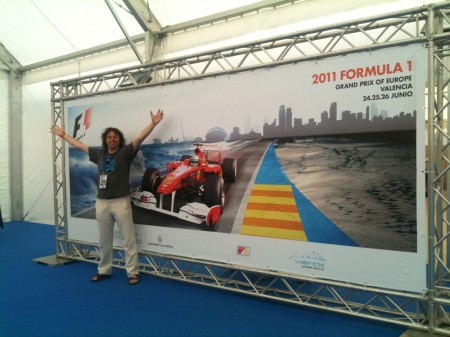
Most people don’t know I’m a huge F1 (Formula One) fan. I watch every qualifying session and every race, ever time. I’m depressed in the off-season.
It started when I was a teenager. On Sundays, me and my Mom would always watch the races together. I don’t remember how it started but it was our thing and it has always stayed with me. Even after I left Europe and moved to Canada where F1 fans are few and far between.
I frequently get asked to speak about tourism marketing at places around the world. It’s very flattering that people are interested in what I think and have to say. In the tourism marketing community, I suppose I’m some sort of influencer. Unfortunately I can’t make it everywhere. I try, but I have to pick and choose.
I met Joantxo Llantada from the Valencia Region Tourist Board at the ENTER conference this year. I presented a case study about our marketing for the 2010 games at Tourism BC and he presented a fascinating case study about his F1 blogtrip. So I told him I was an F1 fan.
A few months later he sent me this tweet.

The decision was very, very, very easy. Come to Valencia to do a presentation and visit the F1 race? Uh… yeah!
Connect with somebody’s passion and they’re easily convinced. Joantxo uses the F1 to bring influencers together for a conference and a blog trip. For 4 days we explored the (awesome) city of Valencia, had great food and inspiring conversations. An awesome mix of the biggest bloggers, journalists, social media marketers and digital professionals. From young to old and from all over.
It was educational and inspirational. More about that in the next few days.
-
Experience Design, Marketing, social media, Travel & Tourism
Meh
I often hear from hotel operators that negative reviews on Tripadvisor usually aren’t from their typical customers. A 4-star hotel receives bad reviews from customers who got a deal on a discount website because of high parking fees and the expensive restaurant. A family oriented hotel receives bad reviews from business traveler who complain about the noise from the kids playing in the pool.
I use the chart below in some of my presentations:
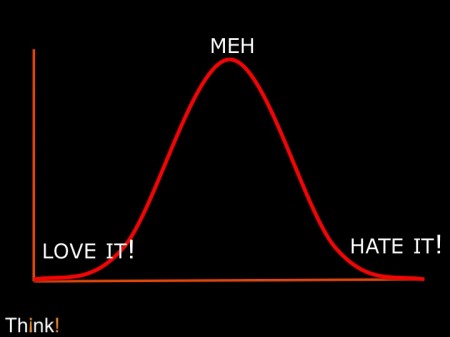
There are a lot of people will love your product and a lot of people who probably won’t. The people who love of hate your product are the people who will talk about you in social media. The people in the middle shrug their shoulders and won’t mention you either way.
Two lessons from this chart:
- Stop marketing to people on the right side of this bell curve. They might deliver short-term cash flow but hurt your business in the long run.
- Moving the curve a little bit to the left will increase the number of positive conversations and grow your business through word-of-mouth.
-
Experience Design, Marketing, Think! Social Media, Travel & Tourism
In business to make memories
04.25.11 | Permalink | 3 CommentsI think it was Michele McKenzie who said at Online Revealed Canada that people in the tourism industry should realize they’re in the business of making memories first and putting heads to beds second. I agree.
If you haven’t seen Simon Sinek’s TED video below, you really should. His book is a worth a read as well.
Simon’s hypothesis is simple. Businesses communicate wrong. They communicate WHAT they do, then HOW they do it. Instead they should communicate WHY they do things, then HOW they do it, then WHAT they do. When you inspire people about WHY you do things, the how and what makes more sense.
At Think! we believe we can make people’s lives better by making tourism experiences better, one destination or product at a time. We do this by working with DMO’s and tourism product operators, helping them create remarkable products and market them to the niche audiences that truly love them. We have a methodology and we offer strategic development, training, products and delivery services to achieve this.
Why should somebody visit your destination or business? Don’t tell me because you have the best food, the best golf, best art scene or the cleanest rooms. That’s WHAT you do. And everybody else claims the same thing.
Disney themeparks are in the business of making “magical” memories for families. Vegas is in the business of making memories that “stay in Vegas” to anybody but families. They both know their WHY and so does everybody who works there, and their customers who visit know it as well.
What’s your WHY?
-
Marketing
Advertising as a sign of product failure?
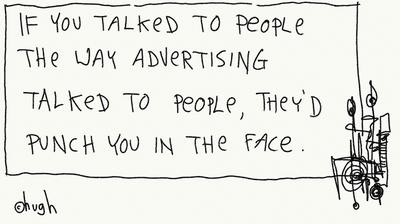
artwork by Hugh MacLeod
Interesting post from Fred Wilson, a VC and principal of Union Square Ventures about advertising (he calls it marketing).
This quote stands out:
I believe that marketing is what you do when your product or service sucks or when you make so much profit on every marginal customer that it would be crazy to not spend a bit of that profit acquiring more of them (coke, zynga, bud, viagra).I’ve often thought that advertising is what you do when a product is either mediocre or commoditized. If customers don’t love your product, give you repeat business and tell their friends, you’ll have to do the talking yourself through paid media. Big brands like Google, Facebook, Zara, Starbucks and Zappos though demonstrate that you can build large successful brands without much advertising.
The thing I could never reconcile in mind were the ads ran by companies like Apple. They have a cult following and products people love and rave about. Why bother with spending anything on paid media? The second part of Fred’s quote is brilliant and makes sense. Advertising can rally your base and pull people of the line.
I’m not claiming advertising doesn’t work. I’m sure that the amount of sham-wows, slap shops and collectable plates sold as a result of their TV Ads makes the producer a profit. But that doesn’t mean its a good product.
A good product sells itself. Don’t fix a mediocre product with advertising, fix the product instead.
-
Marketing, social media, Think! Social Media, Travel & Tourism
The story of our Super Bowl Social Media Campaign that got 2.4 million people talking
02.01.11 | Permalink | 9 CommentsThis is the story about the ‘Mystery Man’ campaign we ran on behalf of the Dallas Convention & Visitors Bureau last week. It’s a story of the power of social media, passionate communities and bringing people together. We knew it was a great idea but the results exceeded our wildest imagination.
Background
Social Media is about sharing and bringing people together. When the Dallas CVB asked us to design a campaign around Super Bowl XLV we thought ‘Why not use social media to get people talking to each other about Dallas?’.
At Think! Social Media, we work with the concept of passionate communities. These are groups of people connected through a shared passion. Engage a passionate community in the right way by offering something remarkable, and they will do the marketing for you through word-of-mouth.
The Big Idea
Needless to say, every NFL team has an extremely passionate community… and offering a chance to win Super Bowl tickets is pretty remarkable. Remarkable enough get people out into the street talking to each other.
We decided to send a Mystery Man to each city of the teams who made it to the Super Bowl. The first person to find the Mystery Man and tell him the secret phrase, ‘Have you been to Dallas lately?’ would instantly win tickets to the big game, 4 nights accommodation, tickets to the NFL experience and some cash towards travel.
The Process
We researched NFL and travel/lifestyle bloggers in each city and asked them if they would like to participate. As “Exclusive Bloggers”, their role would be to share daily clues about the location of the Mystery Man. We were careful in choosing bloggers that have strong social media presences and very engaged readers. We chose 5 in Green Bay and 4 in Pittsburgh. Their role was crucial in tapping into the existing communities and raising awareness about the campaign.
The clues tied in to imagery and facts about attractions in Dallas and became increasingly specific as the weekend went on. By printing the clues on photos they were easy to share through Twitter, and were eye-catching on the blogs and Facebook.
The secret password could only be revealed by ‘liking’ the Visit Dallas Facebook Fan Page. A campaign Twitter account (@DallasSBHunt) was created to coordinate all activities, answer questions and share the latest updates. In addition two hashtags (#SBHuntGB and #SBHuntPGH) were introduced to facilitate discussion around the contest.
Results
Sunday
The conference finals were played on Sunday January 23. We were prepared for each of the 4 cities. At the end of Sunday we knew the contest would run in Green Bay and Pittsburgh.
Monday
We finalized the details of the contest and sent out materials to the bloggers so they could prepare their first blog posts announcing the contest. At this time we activated the contest tab on the Visit Dallas fan page which only had 600 fans.
Tuesday
By noon, the bloggers in each city had announced the contest.
Green Bay: Total Packers, Brent Farvre, Packers Club, Purple Pants Green Jersey, All Green Bay Packers
Pittsburgh: IheartPGH, Steelers Gab, Pittsburgh Sports and Mini Ponies
Slowly the word started to spread. At the end of Tuesday, the fanpage had grown to over 1,000 fans and the followers of the campaign Twitter account began to grow.
Wednesday/Thursday
We continued to build awareness over the next few days. By carefully listening in on Twitter, tapping in to relevant communites and joining the conversations where appropriate we were able to rapidly spread word of the contest. By Thursday, traditional media had gotten wind of what we were up to and a few stations began to report on the contest on the the nightly news. By the end of Thursday over 3000 people had liked the Visit Dallas page.
Friday
At 9am the Exclusive Bloggers announced their first clues and the contest began. We quickly learned that we had struck gold in both cities. The streets were full of people searching for our Mystery Man, many tweeting as they went and following along on Facebook. By Friday @DallasSBHunt was trending in both Pittsburgh and Green Bay.
Best of all, two whole cities were out on the streets talking to each other about Dallas.
That night, the hunt for the Dallas Mystery Man was the headline news on all the local stations (this is my favourite). The Visit Dallas Fan Page had grown to 8,000 fans and the campaign Twitter account had well over 1500 followers.
Saturday
We were lucky that Friday’s clues had been vague enough for our Mystery Men to keep from getting caught, but by Saturday the amount of people on the street made it significantly more difficult to make it through the city unnoticed.
Just after noon our Mystery Man in Green Bay was found and not long after our man in Pittsburgh was caught as well.
The hunt was over, but the ride wasn’t. The winners were invited on news shows (1, 2, 3, 4, 5) and countless blogs, websites, radio stations and news papers were reporting on the contest and its winners.
Sunday and beyond
The winners in Green Bay turned out to be a couple who are homeless and live in a local shelter. They were invited on Fox 11’s morning show to tell their story. Shortly thereafter CNN picked up the story and we had reports from our contacts all over North America (even as far as Australia) who saw the campaign on the news.
The Results
We definitely succeeded in getting people talking about Dallas. We also proved that when you run a Social Media campaign within passionate communities, you don’t need a big media budget. And, if the community is passionate enough, you’ll even make it on the news.
We grew the Visit Dallas Fan Page by almost 10,000 fans in three days. The fanpage received about 100,000 pageviews and generated over 500,000 news feed impressions.
But what we’re most proud of is the incredible positive reaction from the people in Green Bay and Pittsburgh. We received many messages from individuals telling Dallas how much they enjoyed the weekend.

We want to thank the Dallas CVB for giving us the opportunity to execute our crazy idea and give a big thank you to all the local bloggers and the great people of Green Bay and Pittsburgh. May the best team win on Sunday!
This entry is cross-posted on the Think! Social Media blog.
-
leadership, Marketing, Travel & Tourism
Highlights from Things to watch in 2011 (by JWT)
Interesting list of things to watch in 2011 from JWT. Many trends relate to travel, tourism and hospitality. Here’s my highlights to pay attention to and why.
People might be sceptical about Foursquare, Gowalla or Facebook Places. But checkin-in services aren’t going away and services will become more intelligent, more meaningful and more relevant to people as innovators finds the sweet spot. And it’s a natural for travel and tourism.
Microbreweries have been hot in BC for a while and new restaurants and pubs offer selections of beers from around the world. This niche is turning mainstream and offering a great selection of beers might just be a great differentiator for your restaurant or pub.
Most DMO’s are still producing paper guides (don’t get me started). Many offer the option to download an electronic version to reduce production and shipping costs while minimizing environmental impact. Most DMO’s create an exact (PDF-like) copy of the paper version. But that’s missing the point. Offering an electronic format requires re-thinking the existing model for this kind of content delivery.
People are more socially and environmentally aware and the choices they make as consumers are starting to reflect this more and more. Brands are clueing in. Pepsi’s refresh project is a great example. The travel and tourism industry needs to become a lot more mindful of this. Voluntourism is one way of doing this. Tribes wanted is a good example and so is Abraham’s Path.
The next economic driver might very well be the green economy as innovators across the world are looking for solutions to global warming. People’s expectations for products and services will change. If not careful, traveling could become a frowned upon activity because of its environmental impact. It doesn’t have to be this way though but the travel and tourism industry needs to take this trend seriously. It takes leadership. Resort town Whistler for example is leading the local industry in realizing their sustainability vision.
Food is a very important part of a tourism experience. People talk about the weather, the food and how friendly the people were when they come home. A celebrity chef restaurant can be a reason to visit a destination.
This is the stuff I have nightmares about but some people’s definition of ‘getting away from it all’ is to disconnected all devices. As a tourism operator, you need to find your niche and this could very well be yours.
Another example of finding your niche.
As the internet and social network allow people to connect with people in passionate communities, they want to meet in person. The opportunity lies tourism and hospitality businesses is to find relevant communities and offer them the chance to connect in person, from foursquare swarm badge parties to geek cruises.
Needs no explanation.
There are a multitude of people traveling the globe and broadcasting their adventures to their communities. This is the new travel media. I remember suggesting inviting “Where the hell is Matt” to create a video in every community in BC. Never happened unfortunately and I still can’t believe no DMO ever has.
One of the break-through trends of 2010 and a hot topic during DMAI even though it’s old news in Japan. A QR code is in essence nothing more than an easy way to direct a user to a URL/app. But directing people to information is just the beginning. We need more imagination, like these Buddhist munks, Adidas or CASA.
This one is a bit more abstract. It can refer to physical objects as the center of a social interaction. A hotel review on Tripadvisor for example. It can also used as a virtual object used socially in an online environment. Sending someone a virtual gift on Facebook for example. It’s easy to do and the thought that matters, and that’s why they work. <plug>By the way, Think! licences a Facebook gift app for DMO’s and tourism businesses</plug>.
Will there be a galaxy DMO?
Tourism is all about stories. Tourism operators don’t sell a product, they sell a story, a memory. And a story needs a plot, a beginning, a middle and an end. You can design the story and the process is called service design. Companies like Disney go as far as creating a detailed backstory for everything in their themeparks, creating the perfect story for a guest to join in. What’s the story your guests joins?
-
Internet, Marketing, social media
Expert content on VisitFlorida.com
12.29.10 | Permalink | 10 CommentsEvery year I use the ‘quite time’ around the holidays to have a look at what other DMO’s around the world are doing. I love poking around to see what I can learn. I’m thinking of creating a giant presentation with my findings (let me know if you’re interested).
One of the things I’m looking at is what DMO’s are doing to incorporate real time information. This is a trend DMO’s can’t ignore. Brochureware websites are no longer acceptable and consumers expect content that is timely as well.
Florida has created a Florida Live section on their website. The page includes their Twitter feed, Flickr photo’s, YouTube videos etc. It also includes a Google Map with the Twitter feeds from local DMO’s, live webcams, YouTube videos and Fishing Reports.
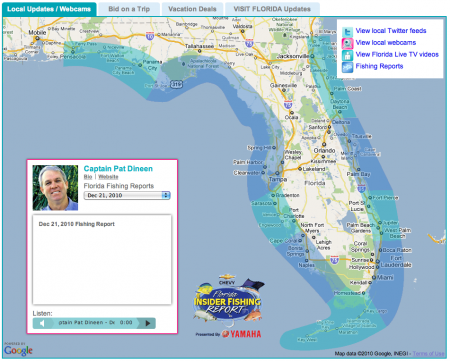
The fishing reports are very cool. Every day the captains call in from their boats to give an update of the fishing conditions of their area. Users can listen to each captain reporting on the conditions.
Incorporating expert content from industry members or residents is something I’ve been pitching for a long time now. Most DMO’s do this with expert bloggers (some better than others). This is a very creative idea to make it timely, relevant and credible.
Great idea, good content, good execution. I love it.
Do you have examples of ‘live information’ incorporated into DMO or other tourism websites?
-
Experience Design, Marketing, Travel & Tourism
Traditions and folklore as powerful tourism motivators
12.05.10 | Permalink | 2 Comments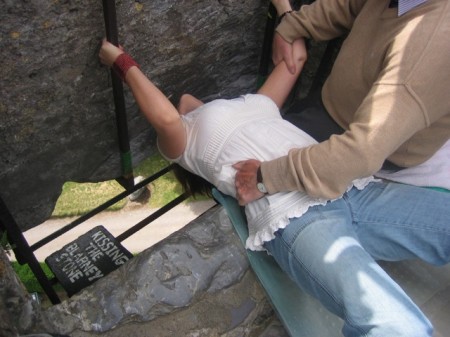
When we were on vacation in Ireland a few years ago we went to kiss the Blarney Stone of course. When I was trying to find out what the stone is about, why people kiss it and when it all started it turned out there are all kinds of legends but no real definitive answer. The only reason why people kiss the stone seems to be because everybody else does it.
We also went to this festival called Puck Fair, where a little town parties for a whole weekend. They catch a wild goat (the puck), get it crowned as king by a young girl and hoist it on top of the main stage for the duration of the event. Why? Nobody is really sure. But the town is packed.
In Rome, people throw about 3000 euros a day in the Trevi fountain. In Prague, people rub the Statue of St John Nepomuk.
People are social and people want to be part of a story. For a tourism business or DMO, traditions can be remarkable experiences that put people in the story of your destination. People will go out their way not to miss them.
What traditions and folklore does your destination have people can be part of?
It doesn’t have to be steeped in history either. It can be as simple as nailing a pair of shoes to a tree. Next thing you know it’s a tradition, everybody is doing it and you have a tourist attraction like in Prince Rupert, BC.
» Next Entries










